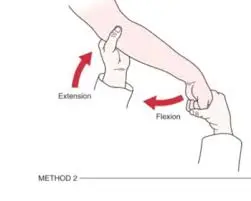Waddell Sign
Table of Contents
Introduction
- Professor Gordon Waddell first described Waddell’s signs to find out patients likely to have a poor prognosis following surgery for the low back pain. However, clinically and medico-legally, this has been misapplied & misinterpreted as the credibility test and this means of detecting fraud.
- A Waddell’s sign is frequently misapplied by assessors to deny car accidents as well as imply that a patient is faking them.
- There are 8 clinical physical signs that are named “non-organic signs” in Waddell’s sign. Professor Gordon Waddell may not intend for the term “non-organic” to imply that pain is not accurate. The patient is assured that the back pain may be considered in the psychosocial context and that Waddell’s sign may be utilized to identify patients who may need physical, psychosocial, and behavioral low back pain treatment.
The technique of Examination of Waddell signs include
- Tenderness on a surface: tenderness to the light touch or pinch over a large portion of a lumbar skin.
- The tenderness that is not anatomic: Profound delicacy over the vast region that gets over non-anatomic limits.
- Loading axis: While axial loading, a patient stands whereas the examiner presses vertically, as well as downwards, on their head, causing lumbar pain.
- Turning an acetabulum: While a patient is standing, an examiner passively rotates a pelvis as well as a shoulder in the same plane. This is the positive sign in the event that aggravation is evoked in an initial 30 levels of turn.
- Disturbance in straight leg raise: The same positive physical finding is tested in a distraction test while a patient is distracted, which may be accomplished by testing one body part as well as observing another. The variations of a Straight Leg Raising test may be utilized as the distraction test. When a patient reports pain while a formal straight leg raise examination, such as while supine, as well as when pain significantly reduces during the distracted straight leg raise, in which an examiner extends a knee during a patient is seated, a test is positive.
- Sensory disturbance in a region: A patient describes pain that does not follow the dermatomal pattern but rather follows the disturbance that looks like the stocking.
- An area of weakness: A weakness or even “giving away” of the cogwheel that can not be explained by neuroanatomy.
- Overreaction: This is the painful response that is exaggerated in response to a stimulus as well as does not happen again when the same stimulus is given later.
- A test is positive if the patient scores 3 or more out of the five categories.
Waddell’s sign 8 clinical signs are isolated into 5 general classifications that incorporate
- Shallow as well as non-anatomic delicacy
- Pivotal stacking as well as acetabular revolution reproduction
- Interruption
- Territorial tangible unsettling influence as well as shortcoming
- Eruption
Indications
- Waddell’s sign may be performed as part of the physical exam for lumbar back pain due to this only indicates that a patient can require a psychological exam.
Precautions
- Patients with hip pathologies may avoid rotation due to this may cause an acetabular tear.
- Patients who have sustained severe injuries to the neck or even cervical spine should not undergo axial loading.
Evidence
- Fishbain et al.’s systematic review found that Waddell signs do not distinguish between organic and non-organic problems or psychogenic pain.
- Adri T et al. conducted a cross-sectional study to determine the validity of a Waddell score. This concluded that a Waddell score may not be utilized as a psychological screening tool.
- However, the study by Dustin B. Wygant et al. found that somatic overreporting is linked to the Waddell signs.
- Since this implies that pain does not originate in the body, the term “non-organic” is inaccurate. Notwithstanding, an investigation of neurobiology comprehends Waddell’s sign’s causes, so the more right term that ought to be utilized is “conduct reactions to actual assessment”.
- Owing to the lack of understanding of the neurobiology of pain, the pain could have an unknown physical cause. A good reason not to look into other physical causes of pain may not be caused by something psychological. A patient may follow the instructions of a physical therapist very carefully.
FAQs
If you don’t feel any pain or discomfort while you’re distracted, you have a positive Waddell sign for distraction. The act of distracting someone should not be painful or surprising. The most common distraction test for low back pain is the straight leg raising (SLR) test.
The physical signs known as Waddell’s are intended to identify non-organic causes of lower back pain. A non-organic symptom is one that is different from how a condition usually looks. The Waddell test for tenderness falls into one of five categories. tests for stimulation.
The application of Waddell’s signs is a common method of detecting exaggeration and faking. Some of these signs are: Positive Waddell’s sign of tenderness—deep, widespread tenderness is a positive sign. Stimulation: Low-back pain caused by downward pressure on the head is a good sign.
In 1980, Professor Gordon Waddell described the Waddell signs, a collection of eight clinical physical signs. These signs were initially developed by Waddell, an orthopedic surgeon, to identify patients with low back pain who were likely to have poor surgical outcomes.
Nonanatomic tenderness, pain during sham stimulation, a discrepancy in physical examination, overreaction, and regional disturbances revealed by neuroanatomy were all categories of Waddell signs.





